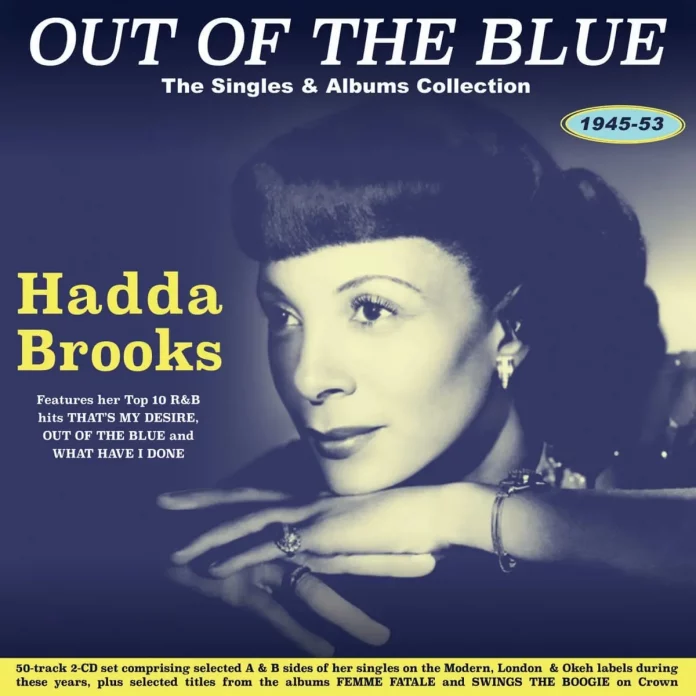A child prodigy, Hadda Riah Hopgood (1916-2002) played piano from age four and studied classical music. Married in 1940 and widowed within a year, she played in clubs where she was heard by Jules Bihari who, in 1945, backed her first recording session and used the proceeds to found Modern Records.
Brooks (who had been renamed by Bihari) began singing, thus extending her appeal to the R&B market. Occasionally, recalling her student days, she played her own arrangements of classical works by Liszt, Dvořák, Chopin, Grieg and others. Brooks appeared in a few feature films, among them In A Lonely Place (1950), and hosted her own television show.
The first 10 tracks on CD1 are instrumentals and her piano playing is strong, as the boogie-woogie and blues genres demand, yet also melodically fluent. Brooks has composer credit on 14 tracks on CD1, including those that originate with classical composers. She sings on 12 tracks on the first CD, and although limited in range her vocal sound is gentle and sincere. On CD2, she sings on all but four tracks and, reflecting the broadening of her repertoire and popularity in the late 1940s and early 1950s, there are several standards, including The Man I Love, The Best Things In Life Are Free, My Ideal and I Hadn’t Anyone Till You.
Her approach is attuned the intentions of lyricists and composers, although, as on Always, she would sometimes stray far from the original melodic line. She mostly fronts a trio and her piano playing is excellent throughout but there are few opportunities for instrumental solos other than those by the gifted and inventive guitarist Teddy Bunn.
For most of the 1960s, Brooks lived in Australia, where she again hosted a television show. On leaving Australia, Brooks resettled in Los Angeles where she played hotel gigs and appeared in feature films, including The Crossing Guard (1995) and The Thirteenth Floor (1999). In the mid-1990s, Brooks made her final recordings. Brooks’ life and career are recounted in detail in a liner note by Paul Watts. This release will appeal to many, especially those who recall with affection this era of jazz.
Discography
CD1: Just A Little Bluesie; Swingin’ The Boogie; Blues In B Flat; Nightmare Boogie; The Man I Love; Bluesin’ The Boogie; Blue Mood; Polonaise Boogie; Society Boogie; Grieg’s Concerto Boogie; You Won’t Let Me Go; Humoresque Boogie; That’s My Desire; Romance In The Dark; Trust In Me; Don’t Take Your Love From Me; That’s Where I Came In; It All Depends On You; Hollywood House Party Boogie; The Best Things In Life Are Free; Variety Bounce; Out Of The Blue; Bully Wully Boogie; What Have I Done; I’ve Got My Love To Keep Me Warm (72.23) CD2: Sailboat In The Moonlight; Bewildered; Take Me; Always; Lazy Boogie; This Time We’re Through; Keep Your Hands On Your Heart; When A Woman Cries; I Feel So Good; The Thrill Is Gone; Please Be Kind; My Ideal; Dream; My Romance; Anytime, Anyplace, Anywhere; Honky Tonk Boogie; Hip Shakin’ Boogie; I Hadn’t Anyone Till You; All I Need Is You; It Hadda Be Brooks; Time Was When; I’m Still In Love; My Song; Jump Back, Honey; When I Leave The World Behind (73.09)
Brooks (p, v) with Taft Jordan (t); Jimmy Black (as); Teddy Bunn (g); Red Callendar (b) and others. 1945-1953. Various locations.
Acrobat ADDCD3405
















